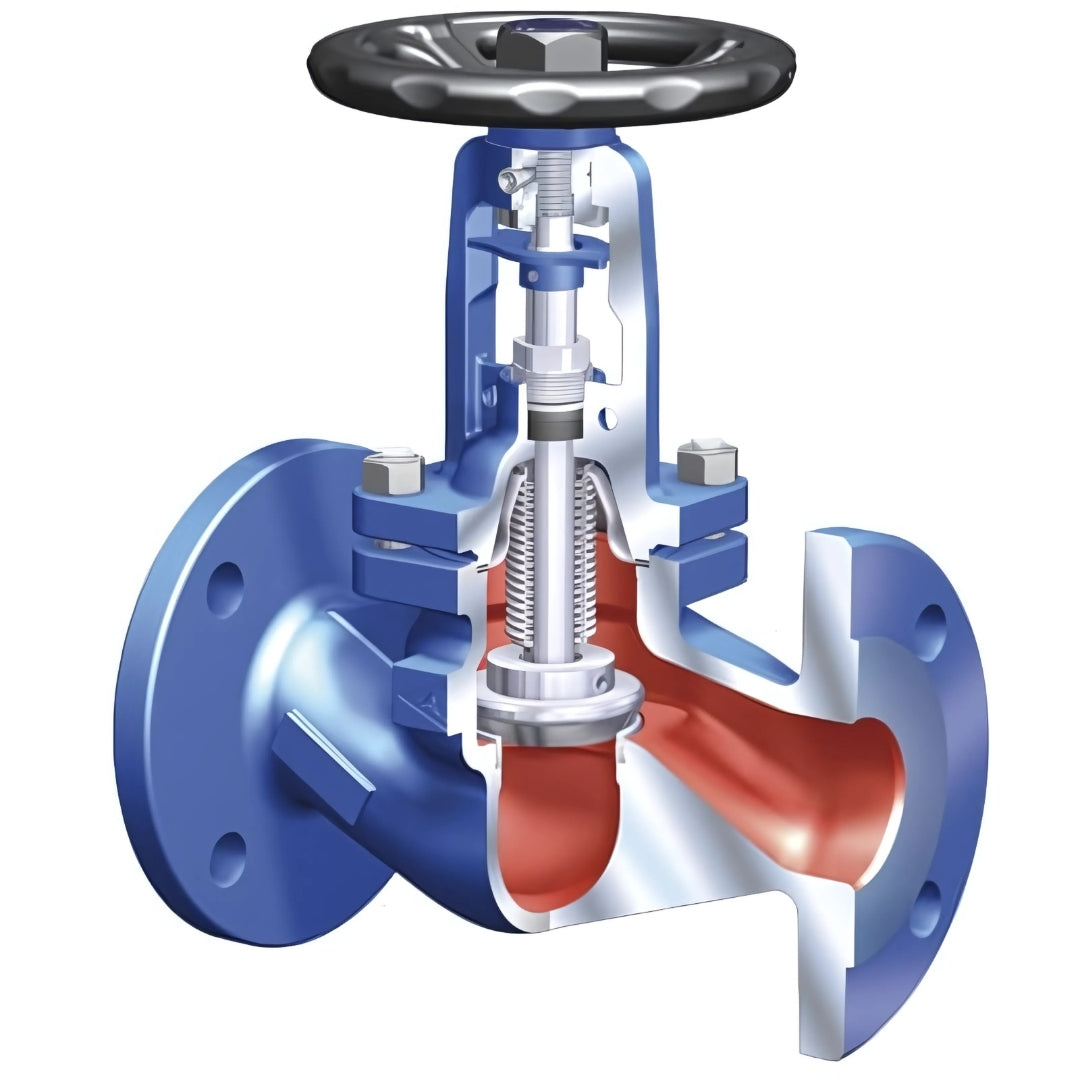Steam Valves
Ari Armaturen FABA+ ANSI Bellows Sealed Globe Valve (Flanged ANSI 300, Cast Steel Body)
Ari Armaturen FABA+ ANSI Bellows Sealed Globe Valve (Flanged ANSI 300, Cast Steel Body)
Couldn't load pickup availability
The Ari Armaturen FABA+ ANSI Bellows Sealed Globe Valve with ANSI 300 flanged ends and a cast steel body is purpose-built for high-pressure, high-temperature applications requiring absolute sealing integrity. Featuring a multi-layer stainless steel bellows combined with a precision-guided rising stem, this globe valve provides leak-free operation, even under thermal cycling — making it ideal for hazardous media such as steam, thermal oil, and chemicals.
The cast steel construction offers exceptional mechanical strength and resistance to pressure-induced stress and high operating temperatures. Designed to ANSI/ASME standards, the Class 300 flanges ensure compatibility with North American piping systems, allowing easy integration into industrial plants, refineries, and power generation systems. The bellows seal design prevents fugitive emissions and eliminates stem leakage — helping meet environmental regulations and plant safety requirements. A safety backseat is included as standard for added stem sealing security when the valve is fully open.
Manufactured by ARI Armaturen, the FABA+ range is known for its reliability, long service life, and maintenance-friendly layout, making it a premium choice for critical isolation and control duties.
Key Features
Bellows Sealed Design
Ensures zero stem leakage by using a multi-ply stainless steel bellows — ideal for hazardous or high-temperature media.
Cast Steel Body
Durable and heat-resistant material for use in high-pressure steam, oil, or chemical lines.
ANSI 300 Flanged Ends
Compatible with Class 300 piping systems, ensuring secure, high-integrity installation in American-standard process lines.
Backseat Feature
Secondary stem sealing when fully open for added safety during maintenance or operation.
Precise Throttling Capability
Globe valve mechanism provides smooth, accurate flow control and dependable shut-off.
Low Maintenance, Long Lifespan
Robust internal components and service-friendly design for reduced downtime and long-term reliability.
Share

FAQ's
What is the difference between a valve and an actuator?
What types of actuators are available?
The main types of actuators are:
Pneumatic actuators – use compressed air for fast, reliable operation.
Electric actuators – use electrical power for precise control.
Hydraulic actuators – use fluid pressure for high-torque applications.
Each type offers unique advantages depending on the environment, media, and system control needs.
How do I choose the right actuator for my valve?
To select the correct actuator, consider:
Valve type and torque requirement
Power source available (air, electric, or hydraulic)
Operating environment (temperature, humidity, hazardous area)
Control signal type (on/off or modulating)
Matching actuator torque and compatibility with the valve’s ISO mounting ensures reliable performance.
What are the main types of valves used in automation?
The most common valves in automated systems include:
Ball valves – for tight shutoff and quick operation.
Butterfly valves – for larger flow control with compact design.
Globe valves – for precise throttling and flow regulation.
Check valves – to prevent backflow.
Gate valves – for full bore flow isolation.
What’s the difference between a double-acting and spring-return actuator?
Double-acting actuators use air (or power) to both open and close the valve.
Spring-return actuators use air to open (or close) the valve, and a built-in spring to automatically return it to a safe position when power or air is lost — ideal for fail-safe operation.
How often should valves and actuators be serviced?
Regular maintenance intervals depend on operating conditions, but a good rule of thumb is to inspect every 6–12 months.
This includes checking for leaks, lubrication, seal wear, and actuator responsiveness to prevent unexpected downtime.

